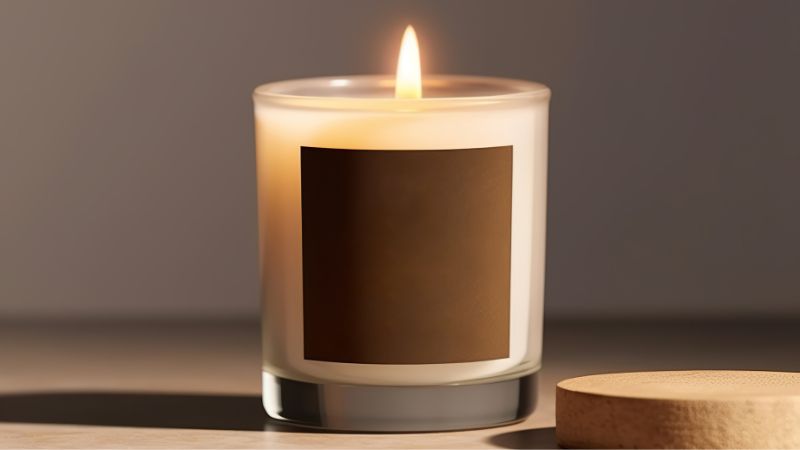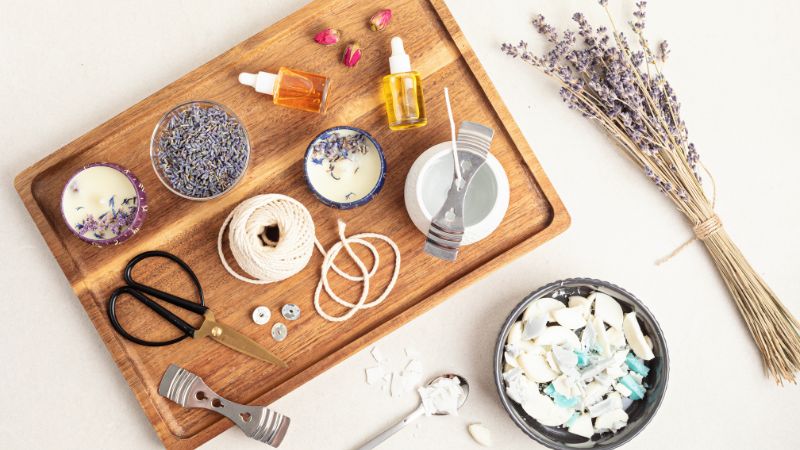
Wax candles have lit our homes and hearts for centuries, offering more than just light. They create special moments and bring warmth to any space with their gentle glow.
Candles have been with us for thousands of years. Ancient Egyptians used rushlights dipped in melted animal fat around 3000 BCE. The Romans improved candle making by using beeswax, which burned cleaner than tallow (animal fat).In the Middle Ages, candle making became a craft. Guilds formed, and techniques improved. By the 1800s, scientists developed ways to make cleaner, longer-lasting candles using new materials like spermaceti and paraffin.
Today’s candles blend tradition with innovation. You can find candles made from soy, coconut, and other plant-based waxes, all inspired by ancient methods.
The beauty of a candle isn’t just in its light but in how it transforms a space. The soft, flickering glow creates a mood no electric light can match. The gentle crackling of some wicks adds a cozy soundtrack to quiet evenings.
Materials and Craftsmanship
Choosing the Right Wax
When selecting candles, the type of wax makes a big difference in how they burn and what benefits they offer.
Beeswax candles are prized for their natural honey scent and long burn time. They’re perfect if you want a clean-burning option that helps purify air.
Soy wax, made from soybean oil, has become incredibly popular for its eco-friendly properties.
Coconut wax is another sustainable choice that holds fragrance beautifully.
Many premium candle makers now offer 100% natural wax options for those seeking peace and tranquility without synthetic ingredients.
The Art of Hand-Poured Candles
Hand-pouring is a craft that elevates candle making to an art form. This process allows artisans to focus on quality and attention to detail in ways that mass production cannot match.
Skilled candlemakers carefully select fragrances that will blend harmoniously with their chosen wax. They test different combinations to ensure the scent isn’t too overwhelming or too subtle.
Some artisans add special touches like embedding charms or gems in their creations. These one-off beeswax candles become unique decorative pieces for your home.
The temperature at which wax is poured affects how the candle sets and burns. Expert crafters monitor this carefully, along with wick selection and placement, to create a product that burns evenly and safely.
Sensory Delights of Wax Candles

Fragrance and Ambiance
Candles are powerful mood-setters that can change how you feel in your space. When you light a scented candle, you’re not just brightening a room but creating a sensory journey.
Artisan candles blend different scents that can transport you to different places or times.
Some candles layer multiple note. These complex fragrances unfold gradually as the candle burns.
The flickering flame adds another dimension to the experience. This gentle, natural light creates a relaxing atmosphere that electric lighting can’t match. Many people find candlelight calming after a long day.
Color and Shape Varieties
Candle makers use different waxes to create unique looks and burning experiences.
Colors range from natural creams and whites to bold, vibrant hues. Some candles incorporate layers or swirls of different colors for visual interest.
Shape variations go beyond the traditional pillar or taper. You can find candles shaped as geometric forms, animals, or even decorative objects.
Wax Candles for Special Occasions

Wax candles transform ordinary moments into magical memories, adding warmth and elegance to any special event. Their gentle glow creates the perfect ambiance for celebrations while their versatility allows them to complement any theme or season.
Celebrate with Candlelight
Candles elevate your celebrations with their timeless charm. For weddings, tall tapers in elegant holders create a romantic atmosphere that photography simply can’t resist. The soft, flickering light flatters everyone at the table and encourages intimate conversation.
Birthday celebrations shine brighter with candles! Beyond the traditional cake candles, try placing scented votives around your party space for a festive glow that also adds delightful fragrance.
Seasonal Favorites and Themes
Your holiday traditions gain depth and meaning with the right candles. Winter holidays sparkle with red and green candles or elegant white tapers that complement any decor style. Scented options like pine or cinnamon bring seasonal fragrances to life.
Summer gatherings benefit from citronella candles that serve double-duty – they create ambiance while keeping bugs away! For outdoor weddings, real wax candles offer classic charm with their soft, inviting glow and flickering flames.
Caring for Your Candles
Proper Lighting and Extinguishing
When lighting a candle for the first time, let it burn for 2-4 hours. This allows the entire top layer of wax to melt completely. This first burn is crucial because it prevents tunneling, where only the center of the candle melts.
Never burn candles for more than 4 hours at a time. Longer burns can cause the wick to mushroom and produce more smoke.
Always trim the wick to about ¼ inch before each lighting. This helps control the flame size and reduces soot.
Place your candle on a stable, heat-resistant surface away from drafts, open windows, and fans. Drafts can cause uneven burning and increase fire risk.
To extinguish your candle safely, use a candle snuffer rather than blowing it out. This prevents hot wax from splattering.
Maintenance and Storage Tips
Stop using your candle when about ¼ inch of wax remains at the bottom. Burning past this point can damage the container or surface underneath.
If your candle develops a memory ring (uneven top surface), you can fix it by carefully using a hairdryer to melt and even out the surface.
Keep the wax pool free of debris like wick trimmings or matches, as these can become fire hazards.
Store candles in a cool, dry place away from direct sunlight. Heat and light can fade colors and scents over time.
Cover your candles when not in use to keep dust off and preserve the scent. The original lid works perfectly, or you can use a small plate.
Clean glass containers by freezing them (which makes the wax shrink) and then gently popping out the remaining wax.
Frequently Asked Questions
How can I determine the best type of wax for my candle-making project?
The best wax for your project depends on what you value most.
Soy wax burns cleaner and longer than paraffin, making it ideal if you prioritize air quality.
Paraffin holds scent well and creates vibrant colors, perfect for decorative candles. Beeswax has a natural honey scent and the longest burn time, though it’s more expensive.
Consider your priorities: clean burning, scent throw, cost, or ease of use. Beginners might start with soy wax as it’s forgiving and widely available.
Is there any specific way to dispose of or reuse leftover candle wax?
You can reuse leftover wax by melting it down to make new candles or wax melts. Simply heat the remnants in a double boiler, add fresh scent if desired, and pour into new containers.
For creative reuse, try making fire starters by dipping pinecones or cardboard egg cartons in melted wax. These work great for fireplaces or camping.
If you’re disposing of wax, never pour it down drains. Instead, freeze the container until the wax contracts, then pop it out and throw it away.
What are the benefits of using natural waxes over synthetic ones in candle-making?
Natural waxes like soy and beeswax produce less soot than paraffin, creating a cleaner burning experience. This means fewer black marks on walls and less indoor air pollution.
They’re biodegradable and renewable, making them more environmentally friendly. Soy wax comes from soybeans while beeswax is produced by honeybees.
Natural waxes also tend to burn longer and cooler than paraffin. This gives you more enjoyment time from each candle and reduces the risk of container overheating.
Could you recommend any eco-friendly alternatives to traditional candle waxes?
Coconut wax is gaining popularity as an eco-friendly option. It’s renewable, burns cleanly, and has excellent scent throw.
The creamy texture makes beautiful candles.
Rapeseed (canola) wax offers a sustainable alternative that’s locally available in many regions. It has a lower melting point, creating a lovely pool of wax when lit.
You might also try blends of plant waxes that combine the benefits of different natural sources. These custom blends can optimize burning time, scent throw, and sustainability.



